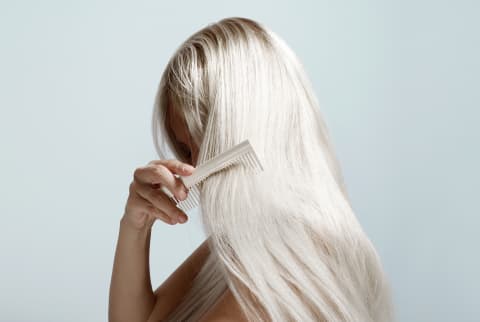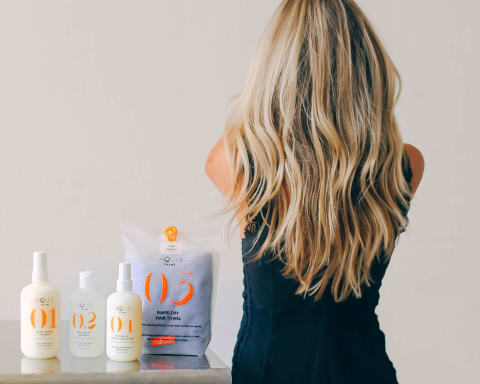Advertisement

You could say that when it comes to most matters of our health, hydration is the name of the game. Drinking water is pretty much Rule No. 1 to help our bodies function at their best. Moisturizing our faces is an unskippable part of our daily skin care routine. Our hair, on the other hand, is a different story.
Listen up: Wet hair is weak hair.
If there's one thing you should always remember about healthy hair care, it's this: Hair is most vulnerable to damage when it's wet.
Our hair is made up mostly of proteins called keratin, which are protected by a thin, scale-like outer layer called the cuticle. Think of the cuticle as flexible shingles on a roof: The moment you wet your hair, water gets in between the gaps and absorbed into the cortex, causing the strand to swell up.
And as it swells and stretches, the cuticle deforms—its edges lift up and crack. "Hair is very elastic when it's wet," explains Clay Nielsen, a hair care expert and celebrity stylist, "so when it dries, it's prone to breakage as it shrinks."
The cuticle can stay lifted and cracked, even as the strand relaxes, giving our hair that rough and damaged feeling. No thanks! Below, read on for five things that you really don't want to do while your hair is in its most fragile state—and what to do instead to protect it from further damage.

What NOT to do when your hair is wet.
- Leaving it soaked for a long period of time. Again, water weakens hair, so the longer your hair stays saturated, the more fragile it gets. There's even a name for it—hygral fatigue—but you can prevent it with a few simple tweaks. First, wait until the end of your shower to wet and wash your hair. Then, dry your hair post-shower instead of letting it air-dry au naturel or sleeping with it damp. The Prime System from Aquis is one of the best we've seen: The four-piece set includes a Water Defense PreWash Spray that fortifies hair to help reduce swelling by 46 percent, a Rebalancing Hair Wash that protects the cuticles, their iconic Rapid Dry Hair Turban that dries hair 50% faster than regular towels, and a Restorative Leave-In Conditioner that strengthens and hydrates damp hair without trapping in water. And by the way, it smells like heaven.
- Brushing your hair from the roots to the ends. Before even reaching for your brush, try detangling any knots with your fingers, which will be gentler on the hair. To brush wet hair, opt for a wide-tooth comb and always start at the ends first and work your way up to the root to avoid causing damage and breakage, Nielsen advises. Pro tip: Keep knots and tangles at bay by brushing with a wide-tooth comb before washing your hair.
- Pulling it into a high ponytail. Your hair is already getting stretched while it's wet, and any extra tension you apply to wet hair can cause strands to snap as well as break where they're being held by your elastic. Dry your hair completely before wearing your hair up, always use a soft elastic that won't pull on your hair, and switch it up with looser styles every once in a while.
- Using a wet-to-dry styling tool. Nielsen cautions against using any hot tools that are designed to style hair while it's wet. "These tools can heat up to a couple hundred degrees, so you're essentially boiling the water in your hair. Avoid them like the plague!"
- Using an oil-based heat protectant. Be careful when using oil-based formulas as a heat protectant as some oils have low smoke points and can also create drag, slowing down your brush as you dry your hair. Make sure to also apply a lightweight leave-in conditioner like Aquis' Restorative Leave-In Conditioner as well—a pure oil alone will likely leave you with dry, fragile strands.
